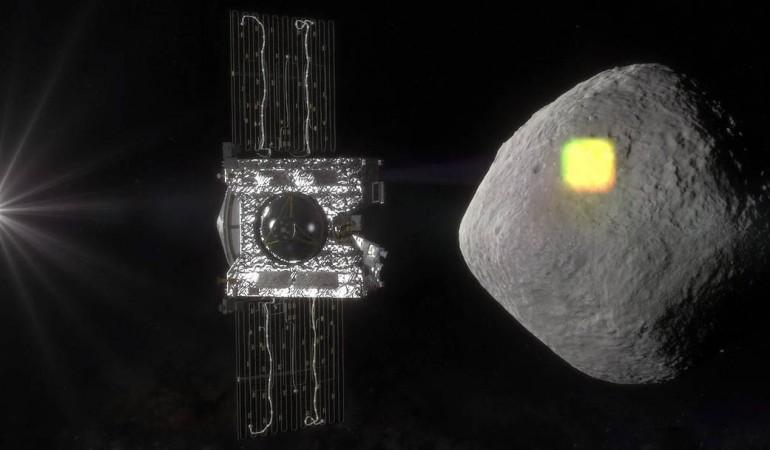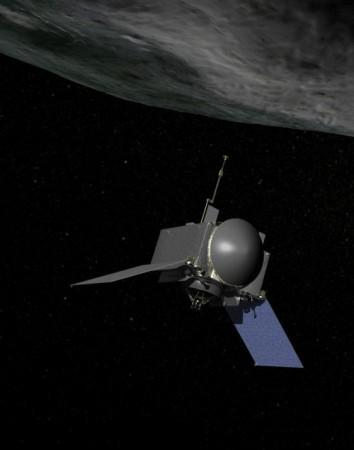
Any celestial body — such as an asteroid or a comet — that could make "threateningly close approaches to Earth" is classified as a Near-Earth Object by NASA.
Of these, "asteroids with a minimum orbit intersection distance (MOID) of 0.05 au (astronomical unit, which is roughly 7.480 million km or 4.65 million miles) or less and an absolute magnitude (H) of 22.0 or less" are called Potentially Hazardous Asteroids (PHAs).
One such asteroid, which is about the size of the Empire State Building, is theoretically all set to smack right into Earth around September 21, 2135.
Called asteroid Bennu, it apparently whizzes past Earth every few years. However, as it turns out, its path could prove to be problematic for our planet in less than 120 years from now. This has prompted NASA to send an almost nine-ton "bulk impactor," designed to nudge Bennu out of Earth's orbit, thus saving the planet from the prospective apocalypse.
What exactly makes Bennu a prospective threat to the planet?
Space.com explained: "Because Bennu is so dark, it tends to absorb the sun's radiation. Bennu then radiates this in turn as heat, which affects its orbit." This push in Bennu's orbit and shape is also an effect of it repeatedly passing close to Venus and Earth, explained NASA.
A study led by University of Arizona principal investigator Dante Lauretta that was published in 2015 states that Bennu is one of the most dangerous PHAs that come within Earth's neighborhood.
With its existing orbit, it is more likely that Bennu would impact Venus rather than Earth, but at the same time, its orbit can be expected to change over the years.
The investigators also said: "It [Bennu] will most likely end its dynamical life by falling into the sun ... There is a chance that Bennu will be ejected from the inner solar system after a close encounter with Jupiter."
The need for NASA HAMMER:
The fear that Bennu might crash into Earth has prompted NASA to use nuclear weapons to shove Bennu slightly off its path through something called the Hypervelocity Asteroid Mitigation Mission for Emergency Response, or HAMMER.
However, Brent W Barbee – the NASA aerospace engineer who helped author the study on HAMMER – has said the entire thing is still theoretical. "Please don't print that an asteroid is going to crash into Earth in The Washington Post," he quipped to the outlet that first reported the possibility of this occurrence.
He insisted that the occurrence is still a mere theory, owing to the fact that the odds of Bennu actually hitting our planet are about one in 2,700. Also, the size of the asteroid is not big enough to shove the human race toward extinction.

But at the same time, there's practical application arising from the possibility, as Barbee shared with The Post. "We're doing these design studies to prepare ourselves, so if we do find a threatening object, we're better prepared to deal with it," he said.
Also, based on how things from space smack into Earth all the time, it's not completely irrational to create a working framework that could possibly reduce the threat these celestial bodies pose upon impact with our planet. So far, this working framework has been sheer luck.
NASA's Planetary Defense Coordination Office tries to detect asteroids and comets that might get dangerously close to Earth's orbit. Barbee said researchers detect about 1,000 new objects each year, leaving another 10,000 extraterrestrial objected still unaccounted for.

But asteroid Bennu also offers a chance for the defense coordination to test their plans for deflecting such celestial threats to our planet. As per the study, Bennu is a "well-studied roughly spherical body." It can be observed with telescopes and its gravitational impact on other celestial bodies can thus be tracked too.
NASA's OSIRIS-REx spacecraft, which has been en route to Bennu for two years, contains instruments that "will map Bennu and establish the composition of the asteroid, including the distribution of the elements, minerals and organic materials," said the space agency.
While the OSIRIS-REx is supposed to scrape off a 2.1-ounce sample from Bennu and bring it back to Earth, should the asteroid prove to be a bigger threat, a much larger spacecraft is supposed to be sent along its path to bring back a bigger chunk.















